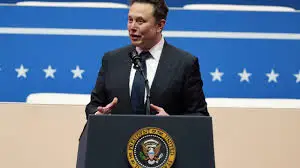Elon Musk checks out after taking the chainsaw to US government: why it was just a matter of time

Musk’s History of Clashes with the US Government
Elon Musk’s career has been marked by a pattern of pushing the envelope—often bringing him into direct conflict with regulatory agencies. Whether it’s Tesla’s Autopilot safety scrutiny by the National Highway Traffic Safety Administration (NHTSA), Federal Aviation Administration (FAA) oversight of SpaceX rocket launches, or the Federal Trade Commission’s inquiries into social media policies after his acquisition of Twitter, Musk has repeatedly challenged government authority.
His public communication style has amplified these conflicts. Musk frequently takes to social media to criticize regulators, question their motives, and even accuse them of hindering innovation. This blunt, combative rhetoric earned the metaphor of using a “chainsaw” to cut through government red tape.
Why This Aggressive Approach Was Bound to Face Limits
While Musk’s drive to innovate quickly and without excessive regulatory constraints resonates with many, the tension with the government was always unsustainable for several key reasons:
1. The Necessity of Regulatory Frameworks
No matter how groundbreaking a technology is, it must operate within legal boundaries designed to protect public safety, privacy, and fairness. Autonomous driving technology, for instance, cannot be released without stringent safety checks due to its potential impact on lives. Similarly, SpaceX must comply with federal launch regulations to mitigate risks to the public and national security.
By openly dismissing these frameworks, Musk risked alienating the very institutions necessary for his companies’ long-term operation.
2. Increasing Public and Political Scrutiny
Musk’s outspoken style has drawn heightened attention from lawmakers and the public. In an era where tech companies face growing calls for accountability — over issues like data privacy, misinformation, and workplace safety — Musk’s antagonism towards regulators only intensified the pushback.
Such scrutiny is often driven by a need to safeguard consumer rights and prevent unchecked corporate power, which government agencies are charged to uphold.
3. Business Risks of Regulatory Conflict
Regulatory battles are costly and disruptive. Investigations or sanctions can delay product launches, add financial penalties, or threaten licenses and government contracts vital to Musk’s ventures.
Maintaining a working relationship with regulators is crucial, particularly for SpaceX, which depends heavily on NASA and Department of Defense contracts. Prolonged conflict risks harming Musk’s broader business ecosystem.
What “Checking Out” Actually Means
Recent reports suggest Musk is dialing down his most aggressive rhetoric and public conflicts with the government. This “checking out” is less about surrender and more about strategic recalibration.
Musk is likely moving toward:
- More constructive engagement with regulators, seeking dialogue instead of confrontation.
- Reduced public attacks that risk antagonizing key government partners.
- Compliance with critical regulations to avoid costly disputes.
- Focusing on innovation within established frameworks rather than seeking to overhaul or ignore them.
This pragmatic approach reflects an understanding that for Musk’s vision to succeed at scale, it must coexist with government oversight — balancing rapid progress with public responsibility.
Broader Implications for Innovation and Regulation
Musk’s experience exemplifies a broader challenge in the modern tech landscape: how to balance fast-moving innovation with necessary government regulation.
New technologies — AI, autonomous vehicles, space travel — often outpace existing laws, creating friction. Innovators like Musk push boundaries, forcing governments to adapt. But unilateral disruption without cooperation risks regulatory backlash and public distrust.
Musk’s story highlights that innovation must be paired with dialogue and compromise. Governments and entrepreneurs alike need to find common ground that protects public interests while enabling technological breakthroughs.
Conclusion
Elon Musk’s apparent retreat from his “chainsaw” battle with the US government marks a turning point. It underscores the reality that groundbreaking innovation cannot simply bulldoze regulatory frameworks; it requires collaboration, mutual respect, and balance.
For Musk, this shift may open doors to faster, smoother progress across Tesla, SpaceX, and X — now backed by more stable regulatory relationships. For the government, it signals an opportunity to create smarter, innovation-friendly policies that still protect the public good.
Ultimately, Musk’s saga is a powerful reminder: true progress is not just about speed and disruption but also about building sustainable partnerships between innovators and institutions.






